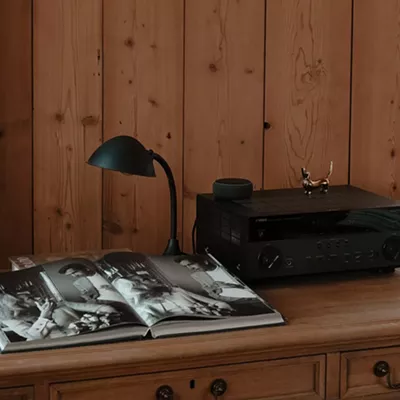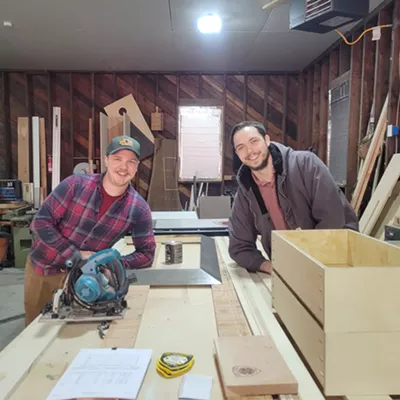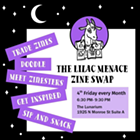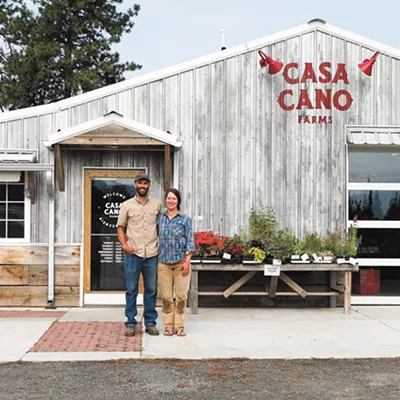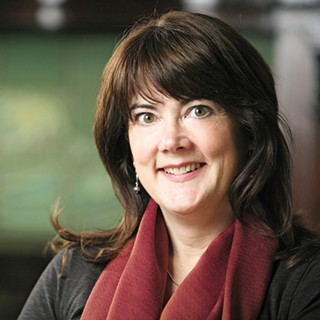It is rare to find a builder who wants more restrictions, regulations and red tape to encumber the construction process. But that’s what Dennis Cunningham of ActiveWest Development signed up for when he decided to build Meadow Ranch, a sustainable 55-plus community in Coeur d’Alene.
“This is an apple orchard getting ready to go in,” he says pointing to espaliered apple trees standing like scarecrows in big pots at the entrance to the new development. “We’re seeing if we can run the landscape lighting with the windmill,” he adds, gesturing to a pile of metal lying on the ground — pieces of an old windmill he managed to rescue from an Eastern Washington farm. But the project has hit a snag: He’ll need a building permit to put the windmill up in here in town. Cunningham chuckles at the scope of the project he’s undertaken.
Like a kid accumulating points on a videogame, Cunningham has had to be creative, innovative and strategic in his quest to score enough points to achieve Leadership in Energy and Environmental Design certification (LEED) for the development. The project was chosen as a part of a pilot program on developing LEED Neighborhoods by the United States Green Building Council. The program is a collaboration between the USGBC, the Congress for New Urbanism and the Natural Resources Defense Council. Cunningham hopes to achieve “Gold” status on the development as a whole, one step below the “Platinum” certification he’s going for on the first house.
In addition to the specifications for the actual building process — such as minimizing construction waste and using materials from within a 500-mile radius — the USGBC’s neighborhood program awards points for encouraging healthy lifestyles and protecting the environment. So Cunningham gets credit for helping to combat urban sprawl by using an infill space — the development is located behind the Fred Meyer just off West Kathleen Avenue, near a landmark red barn. The proximity to shopping helps achieve another goal: decreased reliance on cars and encouraging healthy exercise in the form of walking.
The LEED program is structured so that points are accumulated in several categories; Cunningham’s decision to forego alternative energy, because Idaho doesn’t provide incentives to make it feasible for him, can be offset by gaining points in other areas, such as low-voltage street lighting, use of native and drought-tolerant plants and a host of other thoughtful details.
That’s the curb appeal. But what does a green house look and feel like on the inside?
Creating healthy indoor air is a big goal for the project, one that guided everything from the type and placement of heating systems, to the caulk used to plug every nook and cranny. There are limits on the amount of floor surface that can be carpeted, to decrease indoor allergens; state-of-the-art radiant floor heat to avoid blowing dust around; and outdoor air-intake systems to assure a supply of fresh air in spite of the intensely weather-proofed walls and windows.
Cunningham says this type of construction is new to many subcontractors in the area. “We had design charrettes with all the subs,” to explain the low-waste philosophy and peculiarities like making sure all ventilation systems are sealed during construction to prevent contamination with dust and debris. He had the supply house order low-VOC caulking that no one had used before, “But now it’s on the shelf there. We’re hoping to have an impact at some level,” he says.
And Cunningham says it is not enough to take his word for proof of green building. “We get checked,” he says. Everything from the low-VOC caulking, interior finishes, carpeting, counters and cabinets must be verified in writing by the manufacturer or supplier and submitted to the USGBC. Cunningham says consumers have to be careful when trying to go green. “There’s a lot of green out there and a lot of people are getting green-washed. One of the hardest things we had to do was get validation for carpeting. We would find ‘green’ carpet and write to request technical validation, and we would never hear back.”
But Cunningham says ultimately those green specs might not be what sells the homes at Meadow Ranch. “You have to have something tangible,” he says. To that end, he says buyers should save up to 65 percent on home energy bills as compared to a similar 10-year-old home.
Although Meadow Ranch will feature amenities like a spa and pool, Cunningham feels it is also important for residents to stay connected with the land — which is not always easy to do in an urban setting. Hence the apple orchard, plans for a greenhouse and a composting area, “to make it easy for residents to recycle,” he says. Cunningham says Meadow Ranch will need people who want to put in the time and effort toward making those things succeed. And that promotes a healthy sense of belonging and purpose. “These people aren’t just buying a house,” he says. “It’s a lifestyle.”




